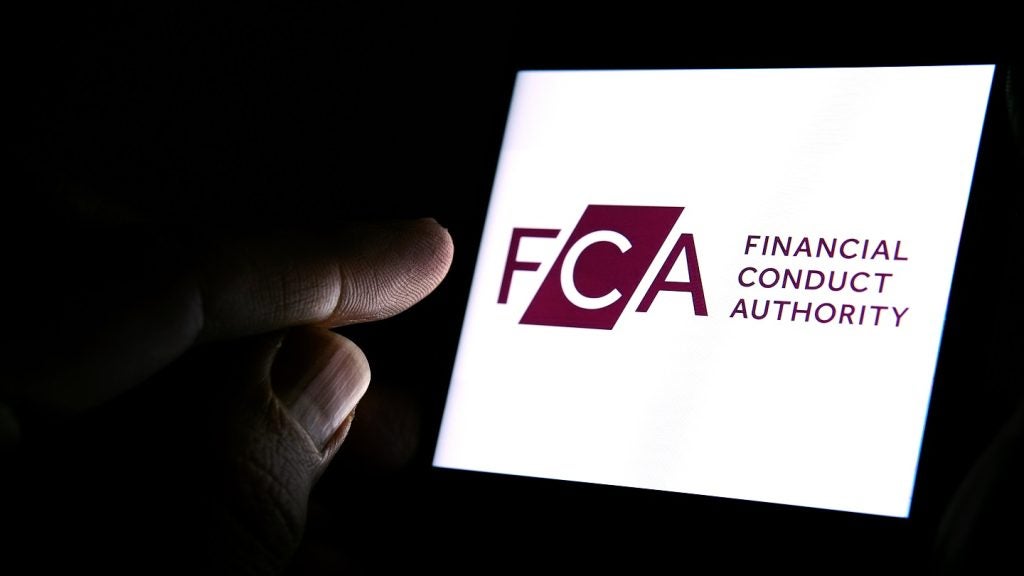While scores of major
banks have not yet launched a payments enabled mobile banking app,
the next generation of remote banking has emerged already: tablets.
Duygu Tavan and Charles Davis speak to industry analysts and banks,
including La Caixa and USAA, about the potential of tablet
banking.
 An immersive technology so
An immersive technology so
sleek, so aesthetically pleasing – a hybrid of the best
characteristics of a PC and a mobile phone – no wonder iPads and
other tablet devices are the buzzword of the digital revolution
right now.
A report released in March by
Forrester estimated tablet sales will reach 44m by 2015, up from
10.3m in 2010. According to research company eMarketer, the iPad
alone is expected to account for 88% of all tablet sales in the US,
where tech-researcher Gartner expects 61% of global tablet sales to
take place.
There seems to be little
doubt that tablets will grow in popularity with consumers – but how
relevant are tablets for banks’ in their quest to retain consumers
and keep up with an increasingly tech-savvy client base?
Is tablet banking just a hype
– or has Apple kicked off another digital revolution? Or, are
tablets, in effect, just an evolution of existing banking
services?

US Tariffs are shifting - will you react or anticipate?
Don’t let policy changes catch you off guard. Stay proactive with real-time data and expert analysis.
By GlobalDataRBI spoke to
analysts at KPMG, PricewaterhouseCoopers, Mobile Strategy Partners
and Celent, as well as three of the first banks to offer iPad
banking in the US – USAA, BB&T and BBVA Compass – plus La Caixa
and Standard Chartered to examine the potential offered by tablet
banking.
While banks see tremendous
potential for transactional banking – and even more for acquiring
new business – analysts emphasised the bigger potential for
in-branch deployment.
Although analysts
acknowledged tablets do offer a new platform for banking, there is
a strong argument that the success of tablets as banking platforms
will depend on the cultural and innovative dynamic of a
bank.
According to Morgan Stanley’s
latest Internet Trends study, smartphone shipments will
overtake both laptop and desktop PC sales by 2012. These
statistics, said Tudor Aw, partner and UK head of technology sector
at KPMG, can be used as a proxy to determine the outcome of the
tablet banking trend.
“When we asked people five
years ago in our global survey whether they would use mobile
banking, the response we got was virtually zero – by 2010, the user
response jumped to 48%,” said Aw.
Phenomenal tablet
sales
 The combination of
The combination of
accelerating mobile content consumption with the phenomenal sales
of tablets – with over onem devices sold in a 28-day period in the
first quarter – suggests there certainly is a new major platform
for banking.
This year, KPMG is going to
include tablets in its annual survey for the first time.
What makes tablets unique is
their social aspect and their ability to visualise money, Matthew
Hobbs, partner at PricewaterhouseCoopers, told
RBI.
“There is an engaging social
element to tablets – a PC or laptop is very personal,
business-like. Plus, the iPad visualises money and financial
planning,” Hobbs said.
One such example is BBVA
Compass’s iPad app which uses graphs to visualise finances, allows
flipping through cheques and statements and transaction
viewing.
At BBVA Compass, beauty is
the driver for iPad banking.
“The word ‘beautiful’
appeared nine times in Apple’s technical manual for developers,”
said Alex Carriles, director of mobile and online strategies at
BBVA Compass.
“So beauty became the goal,
creating a process in which we emphasised the app as an engagement
tool and not just a delivery channel.”
Hobbs agreed that tablets
could be more than a new platform – they can be revolutionary if
banks seize the devices’ potential.
“If the client is using their
iPad to access the bank’s website, then tablet banking is just
evolutionary,” Hobbs said.
“But if the bank creates a
more intimate and social brand, embracing the potential of the
device, then tablets bring in a new dimension of interactive,
social financial planning, visualisation of data into banking. This
is much more engaging compared to what was available
before.”
Patricia Kinney, mobile
manager, and Sumit Deshpande, online channel group manager, of
North Carolina-based BB&T, said their company wanted to exploit
the iPad’s more immersive capabilities.
BB&T’s app lets
prospective and existing customers open accounts, a rare feature
among existing m-banking apps and an extension of the service
available online.
Standard functions include
account checks, bill payment and ATM locators.
“The iPad is a combination of
mobile and online in a more flexible, visually appealing device,”
Deshpande said.
“So we set out to provide
features familiar to online banking users, but presented it in a
way that took advantage of the iPad’s form.”
However, George Kelley,
managing director at North America-focused strategy consulting firm
Mobile Strategy Partners, said: “BB&T really just put a wrapper
around their online banking site and called it an iPad
app.”
For certain functions, the
app starts a browser session inside it and pulls information from
BB&T’s website.
Although BB&T’s iPad app
gives the bank a footprint in the app store, the bank fails to
exploit the tablet’s full potential, Kelley said.
“When you log on, you get
presented with the same page as when you log on through a
PC.”
This is a trap that banks
have to make sure they do not to fall into. If, for example, a bank
simply resized its iPhone app for the iPad and tablets it would
work, but it would not offer a value proposition.
A high percentage of iPad
users are iPhone users – so it is a fair question to ask: what
would be the point?
Many banks’ first attempt to
offer mobile banking was simply to resize their website so it could
launch on a smartphone browser. User experience was clunky, there
was a high level of latency – but at least banks could say they had
an app.
In contrast, USAA exploited
the full capability of the iPad – in particular the touch screen –
and created a ‘native’ iPad app that is more functional than both
online and mobile banking.
“I can actually find my
information easier on the iPad than I can on their online
platform,” Kelley said.
According to USAA emerging
channels associate vice-president Neff Hudson, the goal was to
create an ATM for the pocket.
“We took advantage of the
large screen, and the portrait and landscape capability,
refactoring bills to look like index cards and insurance documents
that look like portfolios and sit on a digital shelf,” Hudson
said.
USAA iPad’s unique
proposition is free financial advice in the form of stories and
videos. The video capability, in particular, adds an immense value
to the tablet banking service, according to the analysts
surveyed.
Celent senior banking analyst
Bob Meara said: “Banks could invest in relevant content they didn’t
do on the internet – because browsers don’t render video that well
– and they haven’t done that on the iPhone because that was
primarily a transaction-based mechanism.
“Tablets add in a whole new
collection of content that will be valuable to customers,” said
Meara.
Hudson called the app a
consumption device.
“It is a service channel for
customers and an acquisition tool for non-customers,” he
said.
“We didn’t have a lot of
competitive intelligence on what to expect, so when we went live at
the end of January and had 60,000 downloads in a fortnight, we were
amazed. That’s twice as fast as our iPhone adoption, and we’ve hit
80,000 thus far.”
Tablets have also become an
integral part of Standard Chartered’s innovation drive.
“We are looking at the tablet
banking potential very aggressively,” said Aman Nairan, Standard
Chartered group head, remote banking. “Mobility as a category has
expanded now. We consider tablets as an extension of mobile
platforms.”
Standard Chartered launched
its iPhone app in April 2010 in Singapore and in September 2010 in
Malaysia. In October, the bank released its iPad app in
Singapore.
As of 14 March, the bank had
recorded over 360,000 unique customer logins into its iPhone Breeze
app.
New portal
interface
 By the end of 2010, Breeze
By the end of 2010, Breeze
iPhone banking customers made up 17% of the active online banking
customer base in Singapore; and about 10% of monthly transactions
take place via an iPhone or iPad.
In Europe, Spanish bank La
Caixa developed a framework for different tablets.
“It allows us to determine
the tablet’s capabilities, brand and model, so we can automatically
adapt all the contents to fit in the screen,” said David Urbano,
director of mobile.
But as the iPad is the
industry-leader, the bank launched a native app as soon as the
device was launched.
“We are now developing a new
portal interface for tablets to make it more useful. A good
consumer experience will retain customers,” Urbano
added.
La Caixa is the most
successful Spanish banks in respect of the mobile channel with
about 650,000 mobile customers, of which 50,000 use
iPads.
Being an early mover is both
risky – there is no competitive intelligence – and rewarding – it
creates brand glow effect.
“Tablet banking apps go
beyond simply a different way of banking,” said Hobbs.
“It is an opportunity for
first-mover advantage, so banks can position themselves as that
forward-thinking bank of the future.”
But the significant majority
of financial institutions do not even offer mobile banking yet,
even though solutions are available from vendors as full turnkey
options.
The success of tablets will
depend on three factors, according to Meara: systems integration,
development effort and, in some cases, resistance.
“Banks ask: ‘We’ve got a long
list of things already to do – are we confident enough tablet
banking is really going to produce compelling business?” Meara
said.
“The answer is ‘No’ in the
short term.”
While banks debate the
self-service side of the tablet proposition, analysts argue
branch-deployment would be a better investment to improve customer
service, retain customers and promote themselves as a modern
bank.
Branch deployment would also
provide a good pilot project for tablet popularity, according to
the analyst community.
A recent Celent survey found
branches were the number one priority at virtually all financial
institutions. The internet channel was a close number two and
everything else was a very distant lesser priority.
Kelley said: “If banks are
going to spend their money on investments, they would be better
off, in the near term, deploying the tablets in branch and help
employees improve customer service.”
Meara agreed and concluded:
“Tablets have proven to be popular with customers – but the
question is: to what extend will they enhance the branch
experience?”
Which ever route banks choose to go, while m-payments will
be more innovative, tablets are nonetheless part of the digital
evolution: they marry the best of both worlds.







